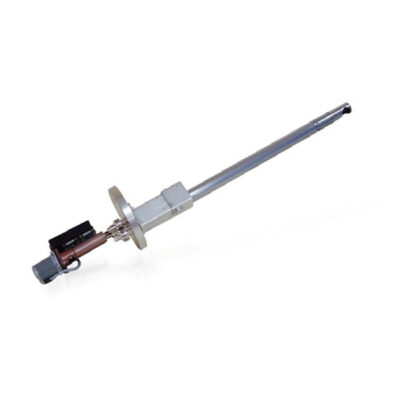Beam Flux Gauges
Details
- Retractable mechanism – for measurement and parking position
- Based on Bayard Alpert principle
Presentation
Bayard Alpert gauges are workhorses’ components in UHV measurements. Their technology enable very low-pressure measurement, down in the 10-12 Torr range.
Working principle is based on ionization of gas molecules, which are attracted by a collector; measurement of current intensity is directly linked to the gas molecule density, ie, the pressure.
There are two types of materials commonly used for filaments cathodes in Bayard Alpert gauges (vacuum measurements), tungsten or iridium. Two types of coatings are also used on the filaments : thorium or yttrium.
Flux measurement is achieved by monitoring the output of a Bayard Alpert ion gauge, positioned in the path of K-cell emissions, where it can measure the beam equivalent pressure. The ion gauge assembly is equipped with a motorized feedthrough which can be moved into the monitoring position, the movement being linear for C21 and MBE412 series, and rotational for MBE49/6000.
Technical information
| Characteristics | Bayard Alpert gauge |
|---|---|
| Filament type | Tungsten (W) – Nude filament |
| Typical BEP range | 10-3 to 10-9 Torr |
| Positioning repeatability | +/-0,5 mm |






